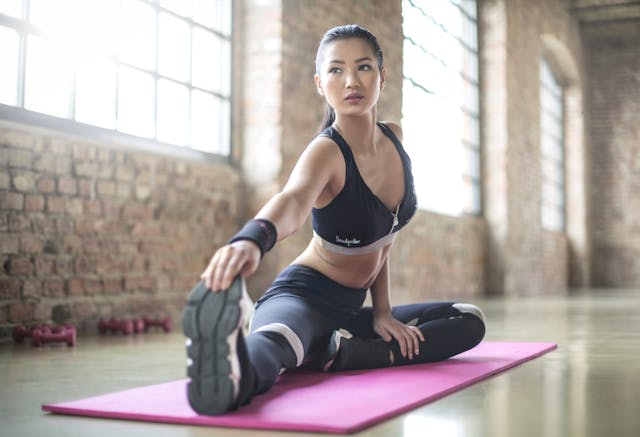
Modern life puts our bodies to the test more often than we realize. From lifting boxes during a move to sitting at a desk for hours, physical strain can sneak into the simplest tasks. That’s why preparing your body for physical challenges isn’t just for athletes—it’s essential for everyone. One of the most effective ways to support your body through daily movement is assisted stretching. With help from a trained professional or partner, this method increases flexibility, improves range of motion, increases stress relief, and protects you from injuries.
The Physical Demands of Everyday Life
You don’t have to run marathons or hit the gym daily to encounter serious physical demands. Everyday tasks, especially ones you don’t do regularly, can push your body beyond its comfort zone. Take DIY moving, for example—there’s a reason people hire professionals with essential moving equipment instead of doing it themselves. Carrying furniture, navigating stairs, and bending repeatedly to pack or unpack can put intense pressure on muscles and joints—especially if you’re not physically prepared.
Even routine activities like chasing kids around, climbing ladders, or standing for long hours at work can cause fatigue and discomfort. These tasks require strength, flexibility, and coordination. Without those, your risk of strain, joint stiffness, or lower back pain increases.
That’s where assisted stretching comes in—giving your muscles and joints the prep and support they need to meet these everyday demands.
What Is Assisted Stretching?
Assisted stretching is a guided technique where a professional helps move your body through stretches you may not achieve on your own. It’s often performed by trained stretch therapists, physical therapists, or holistic wellness specialists who understand anatomy and safe movement patterns.
Unlike self-stretching, where you rely on your own effort and flexibility, assisted stretching allows your muscles to fully relax while someone else applies gentle, targeted pressure. This method can reach deeper muscle groups and correct imbalances more effectively than solo stretching routines. There are several approaches to assisted stretching, including:
● Static stretching: Holding a stretch in place while a practitioner helps maintain alignment.
● Dynamic stretching: Controlled, active movements guided by a professional.
● Proprioceptive Neuromuscular Facilitation (PNF): A method that combines passive stretching with muscle contractions to improve range of motion.
Why Assisted Stretching Works
Your body naturally builds tension in areas where you hold stress or use muscles repetitively. Without regular release, this tightness can lead to joint stiffness, reduced mobility, and even chronic pain. Assisted stretching interrupts that cycle and helps you stay active throughout your life. Here’s how it helps with preparing your body for physical challenges:
- Enhances flexibility: Stretching with assistance allows your muscles to extend further than they would during self-stretching, promoting longer muscle fibers and better joint mobility.
- Improves posture and alignment: Professionals guide your body through movements that target postural imbalances. This is crucial if you sit for extended periods or do physical labor.
- Reduces injury risk: Muscles that are tight or underused are more prone to strain. Stretching regularly improves circulation and primes muscles for action.
- Supports faster recovery: If your muscles are already sore or overworked, assisted stretching can help flush out lactic acid and improve blood flow, speeding up recovery.
- Boosts body awareness: Having a stretch partner helps you feel how your body responds in real-time. You’ll notice which areas are more tense and which need more care.
Whether you’re lifting boxes during a move or reaching for something on a high shelf, preparing
your body for physical challenges means keeping your muscles ready to move, adapt, and recover.
How to Get Started with Assisted Stretching
Assisted stretching doesn’t require a full-time trainer to reap its benefits. Many studios offer personalized sessions tailored to your specific needs. Massage therapists or personal trainers with stretch certifications can also provide these services. Typically, a session begins with a brief discussion about your body, daily habits, and any areas of tightness or discomfort. This is followed by a warm-up involving light movements to stimulate blood flow and warm up the muscles.
Next, a stretch therapist guides you through stretches, performing them slowly and safely and applying gentle pressure to deepen the stretch without causing pain. The session concludes with a cool down, which may include gentle movements or breathing exercises. If you’re new to assisted stretching, it’s advisable to start with one or two sessions per week. As you progress, you’ll become more familiar with the muscles that tend to hold tension and learn how to maintain better body alignment.
Tips for Maximizing Results
To get the most out of assisted stretching, follow these simple tips:
● Stay consistent: Like any wellness practice, the benefits grow over time. Make it a part of your weekly schedule.
● Listen to your body: Stretching should never hurt. Communicate clearly with your stretch partner if something feels off.
● Breathe deeply: Proper breathing helps relax your muscles and allows for a deeper stretch.
● Hydrate: Muscles respond better when hydrated. Drink plenty of water before and after each session.
You can also combine assisted stretching with other recovery tools like foam rolling, yoga, or massage therapy to improve flexibility and manage tension more effectively.
Stretching as a Form of Self-Care
Incorporating assisted stretching into your routine is a powerful form of self-care. It gives you time to slow down, connect with your body, and support your long-term mobility. For people dealing with high stress or physical fatigue, that pause and reset can be just as important as exercise itself.
Also, taking care of your flexibility now can help you maintain independence and reduce discomfort later in life. It’s not about touching your toes—it’s about bending, lifting, and moving through your day without pain. Whether you’re unloading a moving truck, chasing after kids, or getting back into a fitness routine, the goal remains the same: preparing your body for physical challenges so you can stay strong, flexible, and injury-free.
Conclusion
The physical strain doesn’t only come from intense workouts or competitive sports. Simple tasks—like moving heavy boxes or climbing stairs—can become painful if your body isn’t ready. That’s why preparing your body for physical challenges is so important, and assisted stretching offers a simple yet powerful way to do it. It’s a tool that supports everyday function, improves recovery, and helps prevent injuries before they start. Whether you’re planning a DIY move or just want to feel more mobile, make stretching a part of your wellness routine.
Author bio: Jason Miller is a wellness writer and movement enthusiast with a passion for functional fitness. When he’s not researching recovery techniques, you’ll find him hiking local trails or testing out new mobility tools.


Its like you read my mind You appear to know so much about this like you wrote the book in it or something I think that you can do with a few pics to drive the message home a little bit but other than that this is fantastic blog A great read Ill certainly be back
I am glad you are enjoying our blog posts. Thank you.
Somebody essentially help to make significantly articles Id state This is the first time I frequented your web page and up to now I surprised with the research you made to make this actual post incredible Fantastic job
Thanks for your comment. I have a lot of contributors, and try to keep the blog page fresh and full of new and interesting ideas.